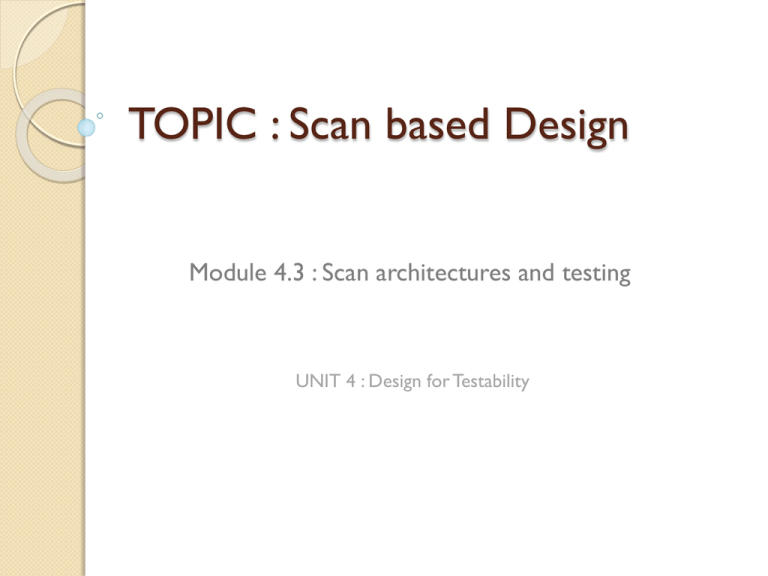Full Serial Integrated Scan
advertisement

TOPIC : Scan based Design Module 4.3 : Scan architectures and testing UNIT 4 : Design for Testability Introduction There are several forms of scan designs; they differ primarily in how the scan cells are designed. We will illustrate three generic forms of scan design : ◦ Full Serial Integrated Scan ◦ Isolated Serial Scan ◦ Non-serial Scan Normal sequential circuit Full serial integrated scan circuit Full Serial Integrated Scan Architecture Full Serial Integrated Scan The normal parallel-load register R has been replaced by a scan register Rs. When N_bar/T = 0 (normal mode), Rs operates in the parallel-latch mode; hence both circuits operate the same way. Now Y becomes easily controllable and E easily observable. Hence test generation cost can be drastically reduced. Isolated Serial Scan In this, scan register is in the normal data path. This scan architecture, the selection of the CPs and Ops associated with the scan register Rs is left up to the desigener. Full isolated scan If Rs is used both to observe and control all the storage cells in S. A test vector yl is scanned (shifted) into Rs, loaded into R', and then applied to the circuit C. The response e can be loaded into R', transferred to Rs, and then scanned out. The register Rs is said to act as a shadow register to R'. Non serial Scan It aim to give full controllability and observability to all storage cells in a circuit. Storage cells are arranged in a randomaccess bit – addressable memory. During normal operation the storage cells operate in their parallel-load mode. Scan in – appropriate cell is addressed, the data are applied to Sin. The output of the cells are wired-OR together. Advantage – Only bits in R that need to changes must be addressed and modified; this saves scanning data through entire register. Non serial Scan Example Random-access scan





